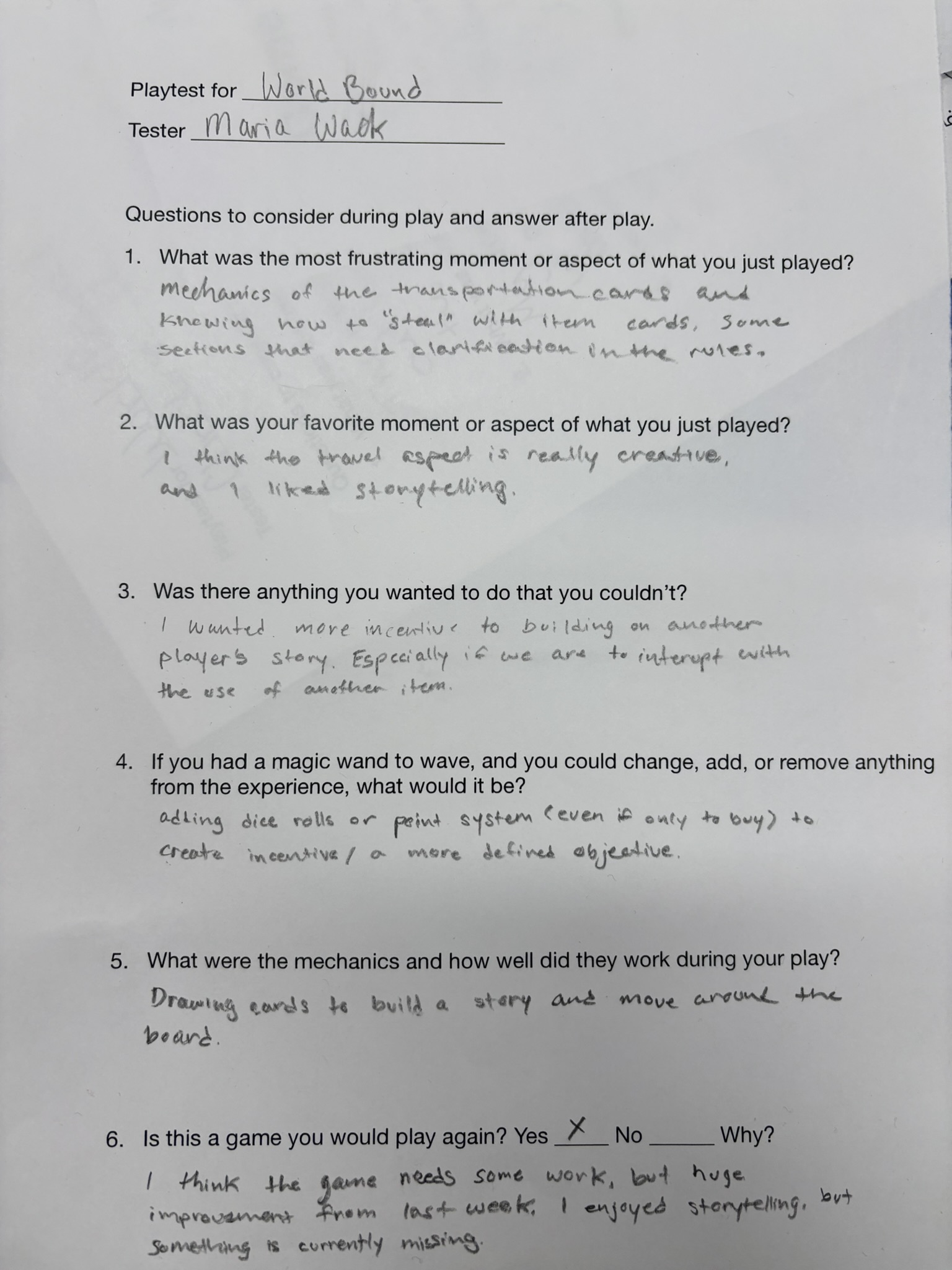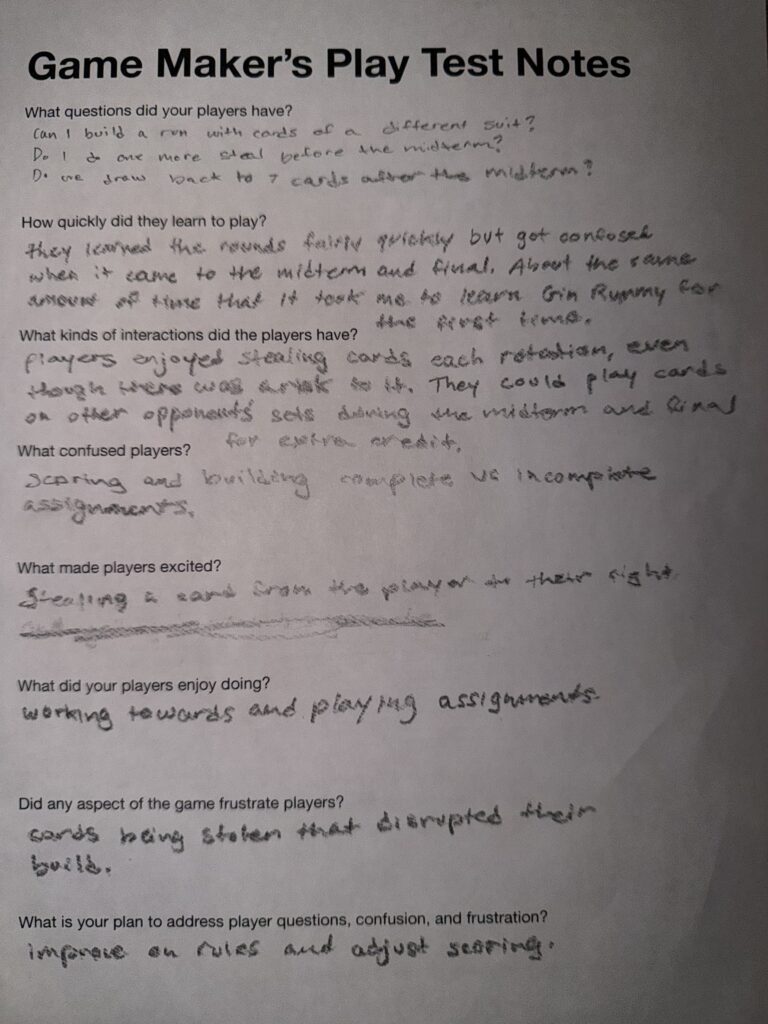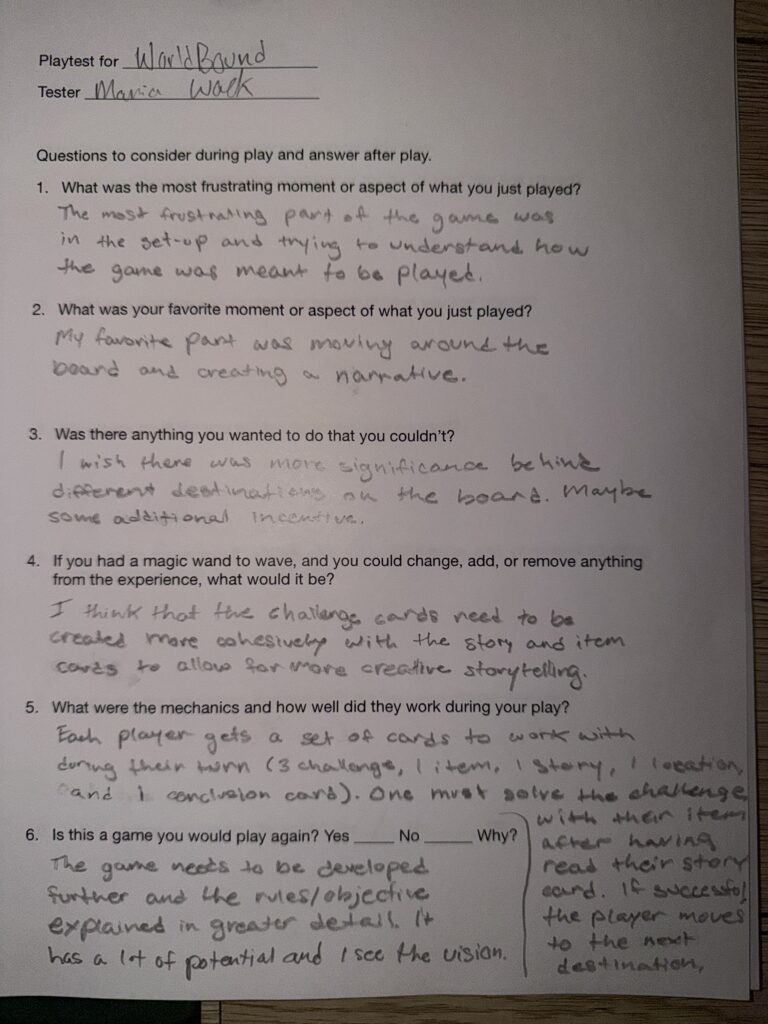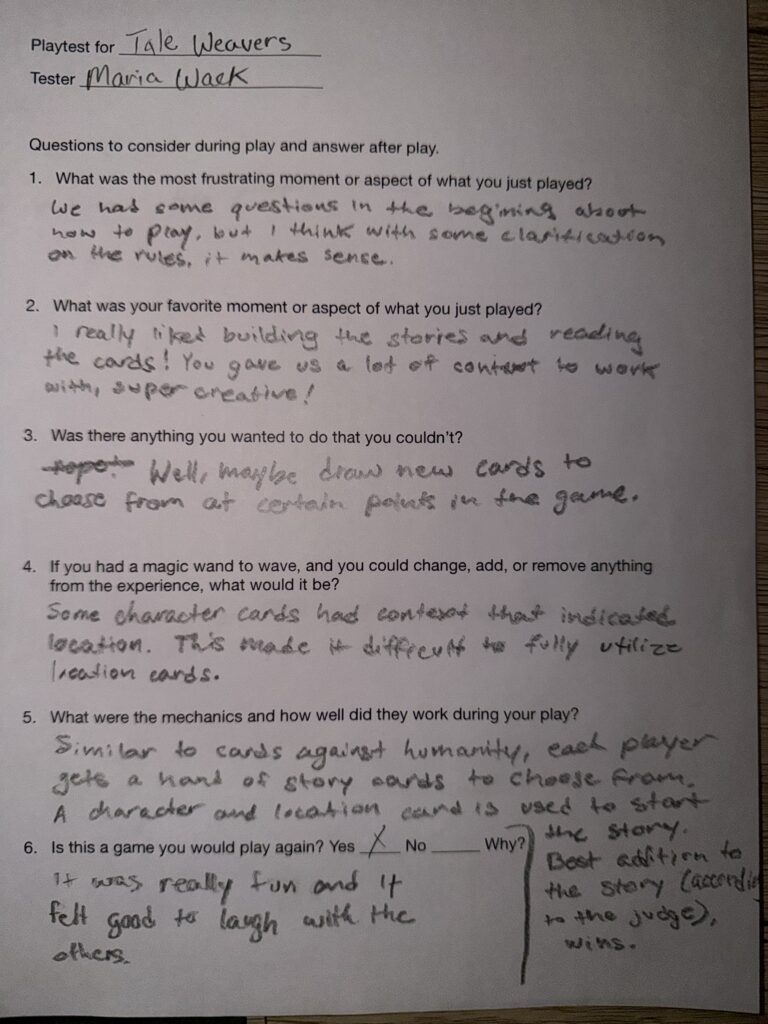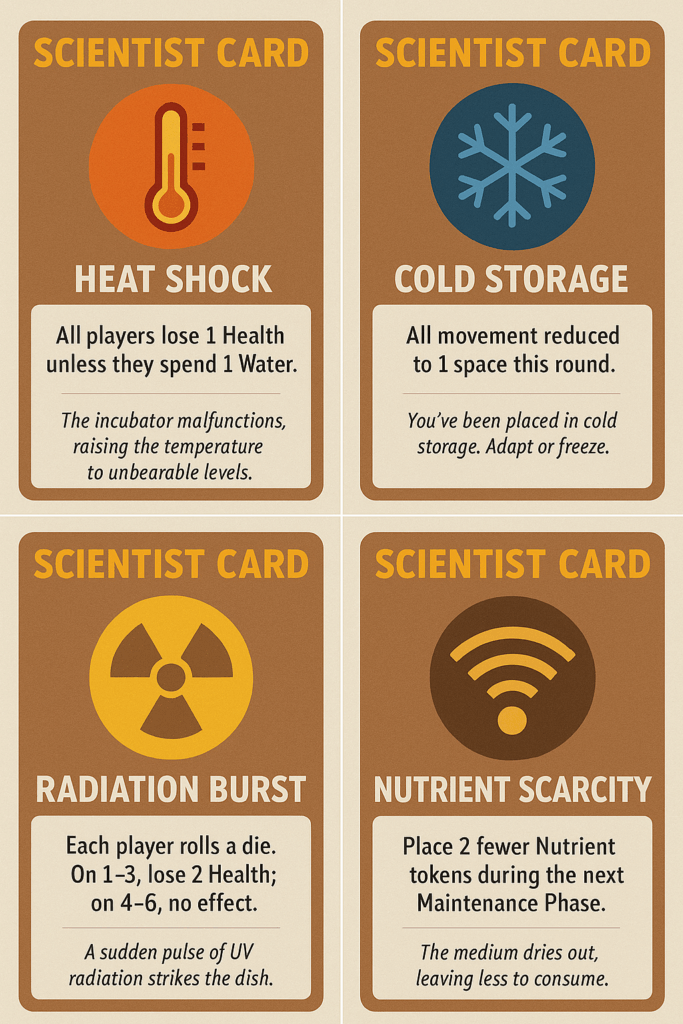Playtest – Memory Language Game
Playtest – Power
Playtest – Trick-or-Treat
Playtest – Chakra Crusade
Playtest – World Bound Revised
Game Maker’s Notes – Deadline
Playtest – World Bound
Playtest – Tale Weavers
Settlers of Catan Playtest – Week 5
Week 5 Game Ideas
- Leprechauns is a card game in which players collect the most gold by drawing cards and strategically stealing from the other players.
- Front Lines is a board game in which the players collect troops to fight the other players by taking over the armies of others.
- Producer is a card game in which the players collect instruments to make the best band by collecting cards and making trades with others.
- Trinkets is a card game in which the players obtain the best trinkets by collecting cards that change rules, give players abilities, and trading with other players.
- Headlampers is a board game in which the players collect the most gems and jewels by mining for gems on the board.
Playtest Questions: Catan
Catan is a board game in which players build roads, settlements, and cities to help reach 10 victory points by using dice rolls, currency gained by owning settlements and cities, and using development cards to one’s advantage.
- Was it fun?
Catan was very fun. I was honed in on expanding my settlement and gathering resources.
- What were the player interactions?
Player interactions included collecting resources according to the number rolled, buying buildings or development cards, trading with other players, robbing other players, and getting robbed by other players.
- How long did it take to learn?
It surprisingly only took about 10-15 minutes to learn. It seemed like a lot at first since the setup took a good bit of time.
- What was the most frustrating moment or aspect of what you just played?
The most frustrating aspect was when multiple dice rolls in a row granted me nothing in resources.
- What was your favorite moment or aspect of what you just played?
My favorite aspect was being able to rob other players and hinder how many resources they would get in future turns.
- Was there anything you wanted to do that you couldn’t?
I wanted to play my development cards in the same turn I bought them in.
- If you had a magic wand to wave, and you could change, add, or remove anything from the experience, what would it be?
I would add the ability to play your development cards in the same turn you bought them in.
- Is this a game you would play again?
I would 100% play Catan again. The game feels like it can have thousands of outcomes, which means every game will be unique. Each game would also be unique since the numbers that are placed on the board are random, so your strategy from one game could be wildly different than the next. I got really into building my settlement to be the strongest it could be.
Bug Themed Ideas
AI Generated Mockups – Fester
Week 4 Game Ideas (Theme: Kayaking)
- Overboard is a competitive card game in which the players have to protect their boat from incoming attacks by using protection cards to guard their boat.
- Battleship: Kayak Edition is a strategy game in which the players try to destroy their opponent’s ship by calling coordinates and strategically moving their ships.
- Rowers is a board game in which the players progress by rolling dice, collecting useful cards, and avoiding obstacles.
- Rough Waters is a collaborative card game in which the players eliminate obstacles from the river by drawing and/or playing cards to get the desired outcome.
- Team Effort is a collaborative board game in which players make it to the end of the river by syncing dice rolls and collecting rule change cards.





